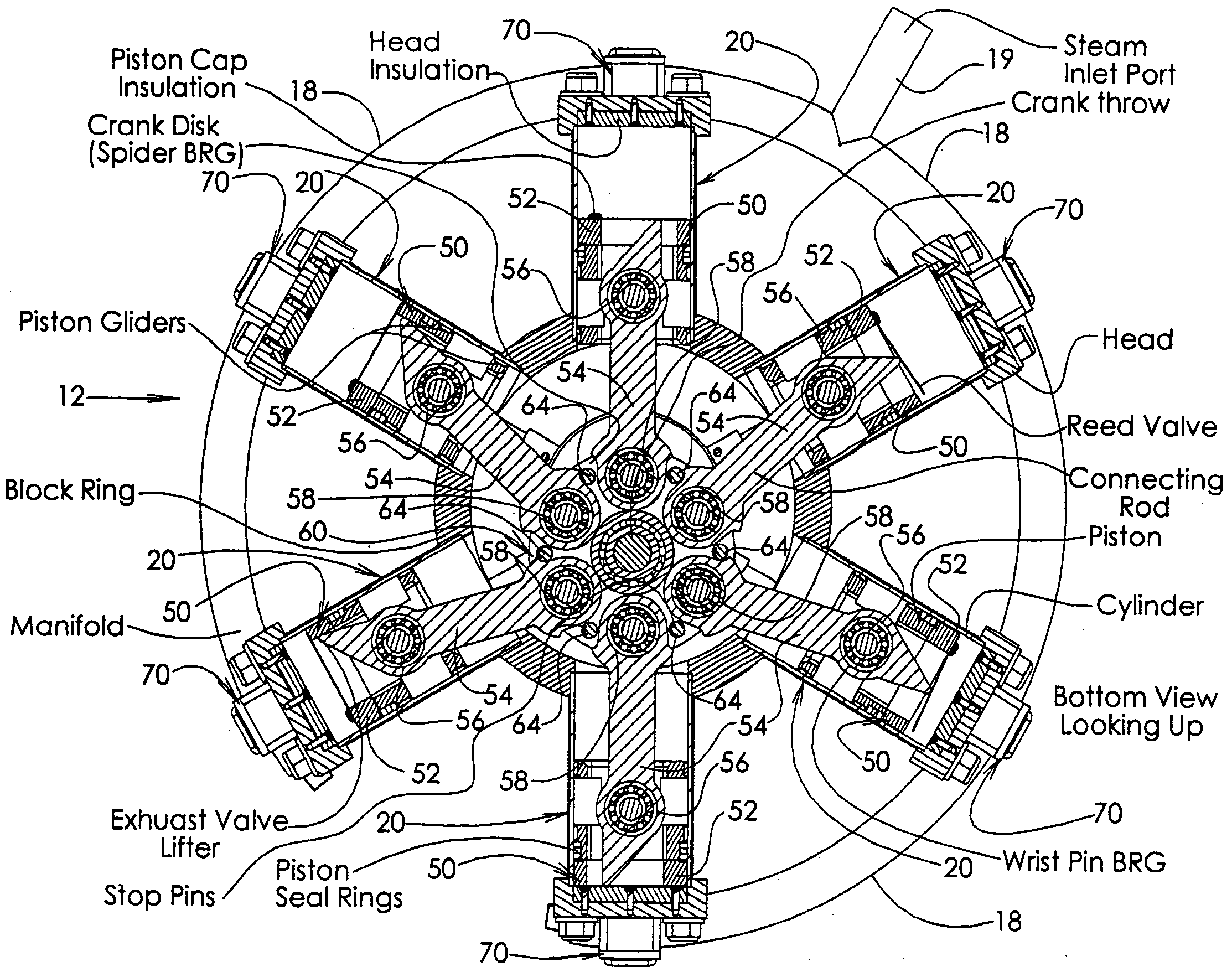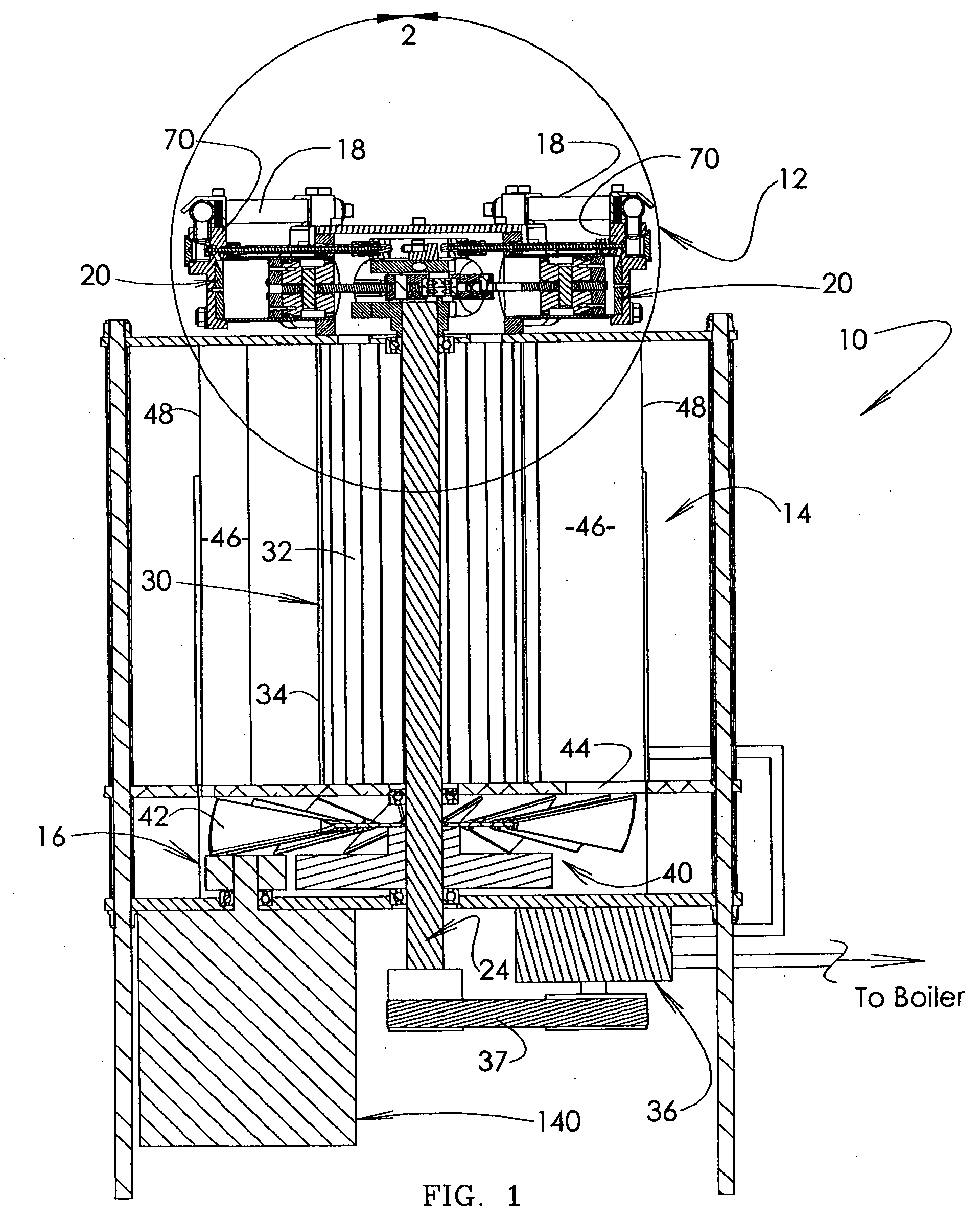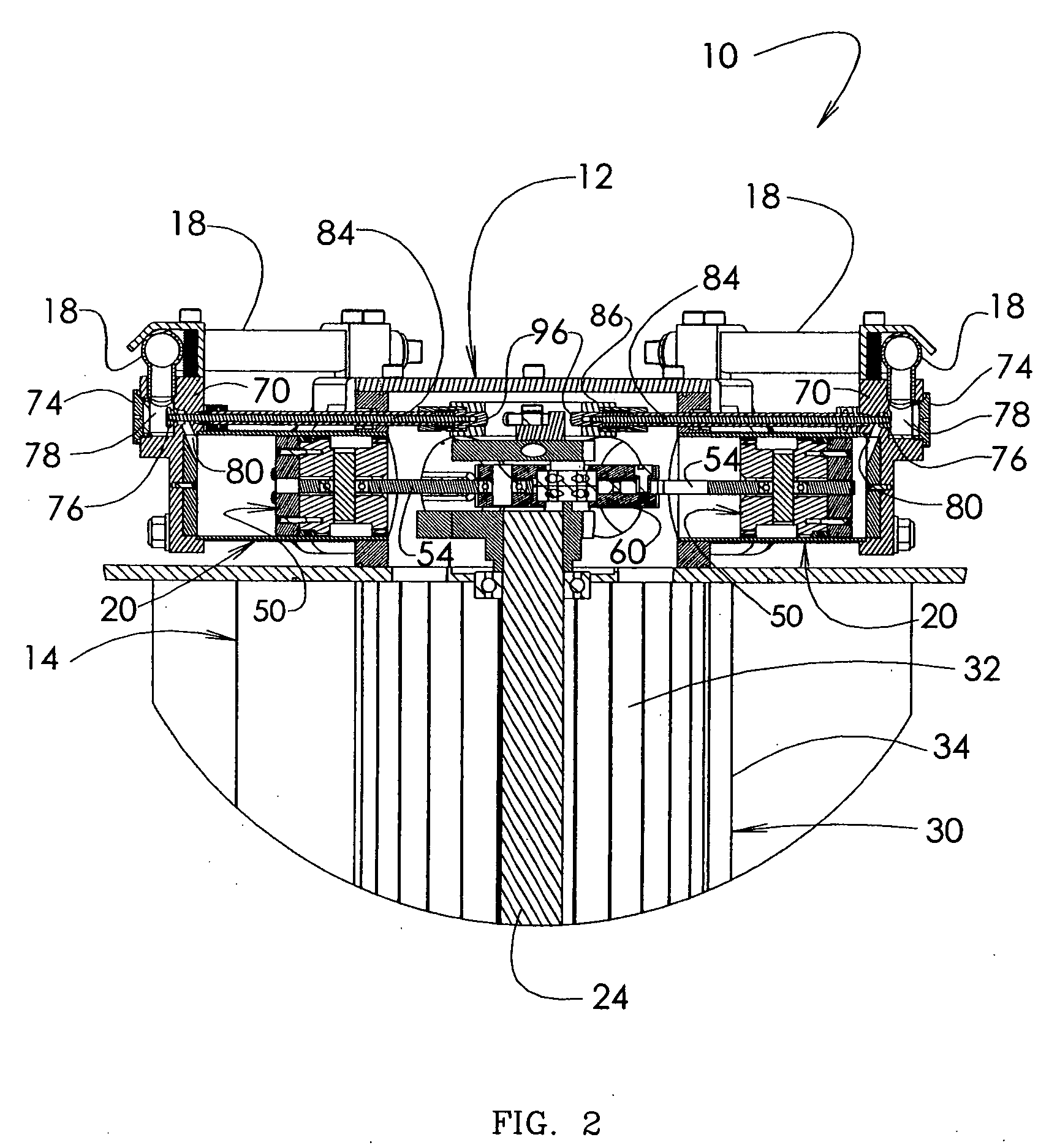Waste heat engine
a heat engine and waste technology, applied in the field of steam engines, can solve the problems of reducing engine efficiency of all types of engines, affecting the efficiency of engines, so as to achieve the effect of increasing or decreasing the size and outpu
- Summary
- Abstract
- Description
- Claims
- Application Information
AI Technical Summary
Benefits of technology
Problems solved by technology
Method used
Image
Examples
Embodiment Construction
[0026]Referring to the several views of the drawings, and initially FIGS. 1-3, the waste heat engine of the present invention is shown and is generally indicated as 10. An upper portion 12 of the engine 10 has a radial arrangement of cylinders 20. Low pressure (i.e., generally between 20 psi-200 psi), low temperature (i.e., generally between 225° F. to 600° F.) steam is generated using waste heat from an external heat source (not shown) such as an internal combustion engine, a refuse (e.g., garbage, waste material) burner, or a solar heat collector to generate seam. Water from a condenser 30 is heated in an external boiler (not shown), using the waste heat to produce steam. The low pressure, low temperature steam is directed through a main line (not shown) that connects to a steam inlet port 19 on a generally circular manifold 18 that is supported on the upper portion 12 of the engine 10. Manifold 18 is structured and disposed to equally distribute the low pressure to intake valves ...
PUM
 Login to View More
Login to View More Abstract
Description
Claims
Application Information
 Login to View More
Login to View More - R&D
- Intellectual Property
- Life Sciences
- Materials
- Tech Scout
- Unparalleled Data Quality
- Higher Quality Content
- 60% Fewer Hallucinations
Browse by: Latest US Patents, China's latest patents, Technical Efficacy Thesaurus, Application Domain, Technology Topic, Popular Technical Reports.
© 2025 PatSnap. All rights reserved.Legal|Privacy policy|Modern Slavery Act Transparency Statement|Sitemap|About US| Contact US: help@patsnap.com



